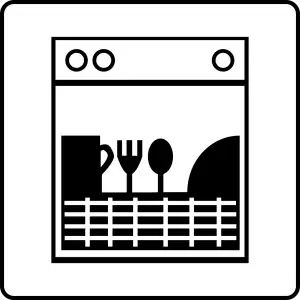Mastering the Art of Flavor: Unlock the Secrets of Using a Convection Oven at Home

Convection ovens have revolutionized the way we cook, offering faster and more efficient cooking results. Unlike traditional ovens, which rely on radiant heat, convection ovens use a fan to circulate hot air evenly throughout the oven cavity. This constant circulation of hot air ensures that food cooks faster and more evenly, resulting in deliciously crispy and perfectly cooked dishes.
Whether you're a seasoned chef or a home cook looking to elevate your culinary skills, mastering the art of flavor with a convection oven is essential. In this article, we will explore the basics of using a convection oven at home, from understanding its functions to adjusting cooking times and temperatures. With these tips and techniques, you'll be able to unlock the full potential of your convection oven and create edible masterpieces in no time.
Understanding the Basics of a Convection Oven
A convection oven is a modern kitchen appliance that utilizes a fan and exhaust system to circulate hot air evenly throughout the cooking chamber. This constant circulation of hot air ensures that food cooks more quickly and evenly, resulting in deliciously crispy and perfectly cooked dishes.
The main difference between a conventional oven and a convection oven lies in how heat is distributed. In a conventional oven, heat rises from the bottom and slowly spreads throughout the oven cavity. This can lead to uneven cooking, with some areas being hotter than others.
On the other hand, in a convection oven, the fan helps distribute heat more efficiently by blowing hot air directly onto the food. This not only speeds up cooking times but also promotes browning and caramelization, giving your dishes that desirable golden crust.
It's important to note that convection ovens can be either gas or electric. Gas convection ovens have a heating element at the bottom while electric ones have heating elements both at the top and bottom. Regardless of the type, they both work on the same principle of circulating hot air.
By understanding how a convection oven works, you can take full advantage of its benefits and elevate your culinary skills to new heights. So let's dive deeper into how to make the most out of this incredible kitchen tool.
Preheating Your Convection Oven
Preheating your convection oven is an essential step to ensure optimal cooking results. Unlike traditional ovens, convection ovens rely on the circulation of hot air to cook food evenly and efficiently. To preheat your convection oven, simply set the desired temperature and allow it to heat up for about 10-15 minutes. This will ensure that the oven reaches the correct temperature before you begin cooking. Preheating is especially important when baking delicate pastries or breads, as it helps create a crisp and golden crust. Remember, always follow the manufacturer's instructions for preheating times and temperatures to achieve the best results in your convection oven.
Adjusting Cooking Times and Temperatures
One of the key benefits of using a convection oven is its ability to cook food faster and more evenly. However, this means that you may need to adjust your cooking times and temperatures compared to traditional ovens.
When using a convection oven, it is recommended to reduce the cooking temperature by about 25 degrees Fahrenheit (15 degrees Celsius) compared to what a recipe calls for. This is because the circulating hot air in the convection oven cooks food more efficiently.
Additionally, you should also reduce the cooking time by approximately 25% when using a convection oven. This ensures that your food doesn't overcook or dry out due to the increased heat circulation.
It's important to note that these adjustments are not set in stone and may vary depending on your specific convection oven model. It's always best to consult your oven's manual for specific guidelines and experiment with different recipes until you find the perfect cooking times and temperatures for your favorite dishes.
By adjusting your cooking times and temperatures accordingly, you can take full advantage of the benefits offered by a convection oven and achieve perfectly cooked meals every time.
Using the Convection Setting for Baking
One of the greatest advantages of a convection oven is its ability to bake with precision and efficiency. When using the convection setting for baking, you can achieve perfectly golden and evenly cooked pastries, cakes, and breads.
To start, preheat your convection oven to the recommended temperature specified in your recipe. The convection setting works by circulating hot air throughout the oven, ensuring even heat distribution. This results in faster cooking times and a more consistent bake.
When baking with convection, it's important to make a few adjustments. Reduce the temperature by about 25 degrees Fahrenheit compared to traditional baking recipes. This helps prevent over-browning and ensures that your baked goods cook evenly.
Additionally, keep an eye on your baking time. Convection ovens tend to cook faster than conventional ovens, so it's essential to monitor your baked goods closely. Start checking for doneness a few minutes earlier than the recipe suggests.
Another tip is to use shallow pans or baking sheets with low sides when baking with convection. This allows for better air circulation around your food, resulting in more even browning and crispier crusts.
Remember that every convection oven is different, so it may take some trial and error to find the perfect settings for your favorite recipes. Keep notes on temperature adjustments and cooking times until you achieve the desired results consistently.
With practice and experimentation, you'll soon become adept at using the convection setting for baking in your own kitchen. Your friends and family will be impressed by your perfectly risen cakes and flaky pastries, all thanks to mastering the art of flavor with a convection oven.
Roasting and Broiling with a Convection Oven
Roasting and broiling are two popular cooking techniques that can be enhanced by using a convection oven. When roasting, the convection setting helps to evenly distribute heat, resulting in a perfectly browned exterior and moist interior. To achieve this, place the food on a roasting rack or directly on the oven rack to allow air circulation.
When broiling, the convection setting ensures that the heat is evenly distributed across the food, giving it a deliciously crispy texture. It is important to use a broiler pan or a baking sheet with raised edges to catch any drippings.
To roast or broil with a convection oven, follow these steps:
1. Preheat your convection oven according to the recipe's instructions.
2. Place the food on a roasting rack or directly on the oven rack for roasting, or on a broiler pan for broiling.
3. Adjust the cooking time and temperature as needed. Convection ovens typically cook faster than conventional ovens, so keep an eye on your food to prevent overcooking.
4. For even browning and crispiness, consider rotating the food halfway through cooking.
5. Use a meat thermometer to ensure that your roast reaches the desired internal temperature.
By utilizing the convection setting for roasting and broiling, you can achieve professional-level results in your own kitchen. Experiment with different recipes and techniques to unlock new flavors and textures in your dishes.
Tips for Properly Using a Convection Oven
1. Use the right cookware: Opt for shallow, lightweight pans that allow for better airflow and even cooking. Avoid using dark or non-stick pans as they can absorb heat and affect the cooking process.
2. Adjust cooking times: Since convection ovens cook faster, reduce the recommended cooking time by 25%. Keep a close eye on your food to avoid overcooking.
3. Lower the temperature: Decrease the temperature by about 25 degrees Fahrenheit when using a convection oven. This will ensure that your food cooks evenly without drying out.
4. Rotate and rearrange: To promote even browning, rotate your pans halfway through the cooking process. You can also rearrange them on different racks to ensure consistent results.
5. Don't overcrowd: Leave enough space between your dishes to allow hot air to circulate freely. Overcrowding can lead to uneven cooking and longer cooking times.
6. Monitor food closely: Keep an eye on your food as it cooks since convection ovens can sometimes cook faster than expected. Use a timer or set an alarm to prevent burning or overcooking.
7. Use lower-sided dishes: Opt for dishes with lower sides, such as baking sheets or shallow pans, as they allow hot air to circulate more effectively around the food.
8. Avoid covering food: Unlike traditional ovens, it's best not to cover your dishes when using a convection oven. Covering can disrupt airflow and result in uneven cooking.
By following these tips, you'll be able to make the most of your convection oven and unlock its full potential in creating delicious culinary masterpieces at home!
Cleaning and Maintenance of Your Convection Oven
Cleaning and maintaining your convection oven is essential for its longevity and optimal performance. After each use, allow the oven to cool down before cleaning. Start by removing any food debris or spills from the interior using a damp cloth or sponge. For stubborn stains, a mixture of baking soda and water can be used as a gentle scrub.
To clean the oven racks, remove them and soak them in warm soapy water. Use a non-abrasive sponge to remove any grease or residue. Rinse thoroughly and dry before placing them back into the oven.
The exterior of the convection oven can be wiped down with a mild detergent and water solution. Avoid using abrasive cleaners that may damage the surface. Pay special attention to the control panel, knobs, and vents.
Regular maintenance includes checking the door seal for any signs of wear or damage. A faulty seal can affect the oven's efficiency. If necessary, replace it to ensure proper heat retention.
It is also important to clean the convection fan regularly to prevent buildup of grease and debris. Refer to your oven's manual for instructions on how to safely remove and clean the fan.
Lastly, schedule professional servicing at least once a year to ensure all components are functioning correctly. This will help identify any potential issues early on and keep your convection oven in top shape.
By following these cleaning and maintenance practices, you can enjoy delicious meals cooked perfectly in your convection oven for years to come.
By understanding the basics and following a few simple tips, you can unlock the full potential of your convection oven and elevate your cooking to new heights. The even heat distribution and faster cooking times will allow you to create delicious dishes with enhanced flavors and textures.
Remember to always preheat your oven to ensure optimal results, and adjust cooking times and temperatures accordingly. When baking, utilize the convection setting for perfectly golden crusts and evenly baked goods. For roasting and broiling, take advantage of the convection fan to achieve tender meats with crispy exteriors.
Properly using a convection oven involves positioning your cookware correctly, avoiding overcrowding, and utilizing lower temperatures than traditional ovens. These small adjustments will make a big difference in the outcome of your meals.
Lastly, don't forget about cleaning and maintaining your convection oven regularly. This will help prolong its lifespan and ensure it continues to perform at its best.
With practice, patience, and a little experimentation, you'll soon become a master at harnessing the power of flavor in your convection oven. So go ahead, unleash your culinary creativity, and enjoy the journey of creating edible masterpieces in the artful world of convection cooking!
Published: 04. 02. 2024
Category: Home



